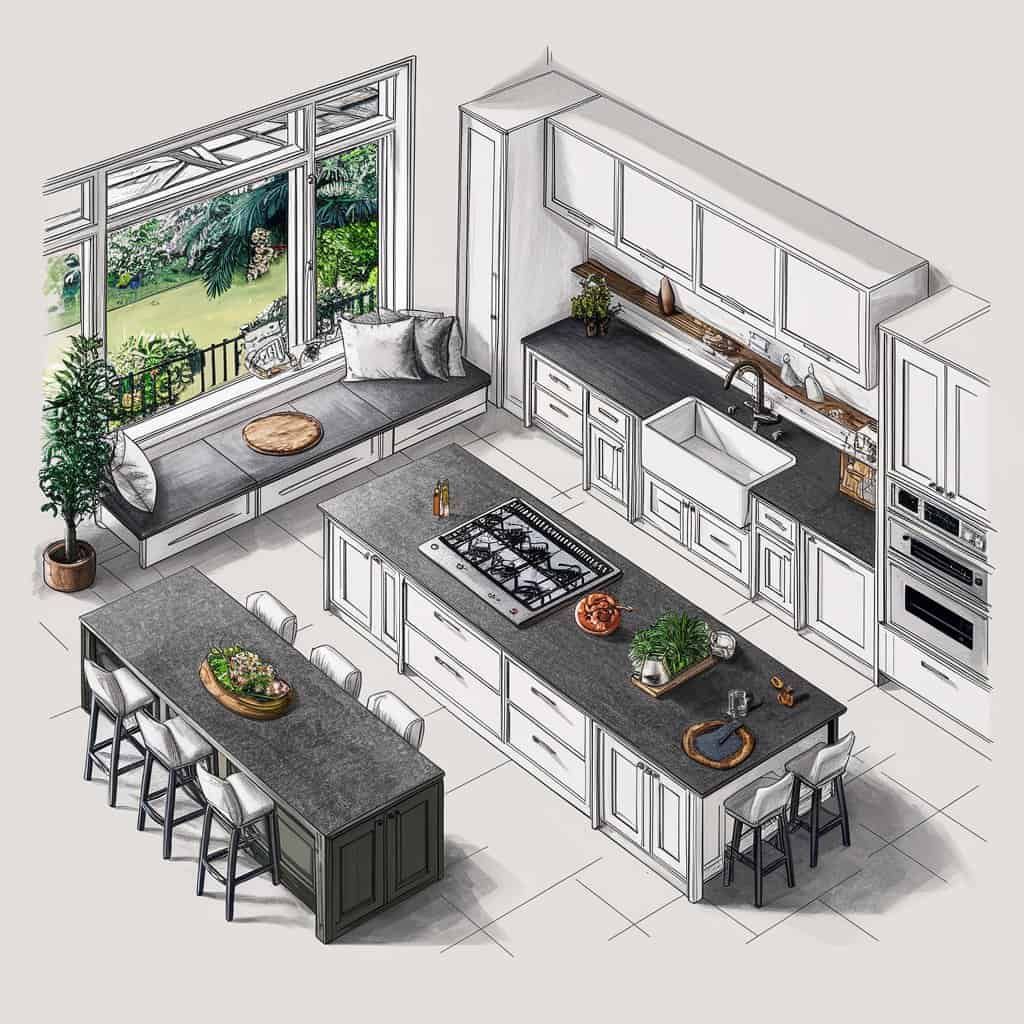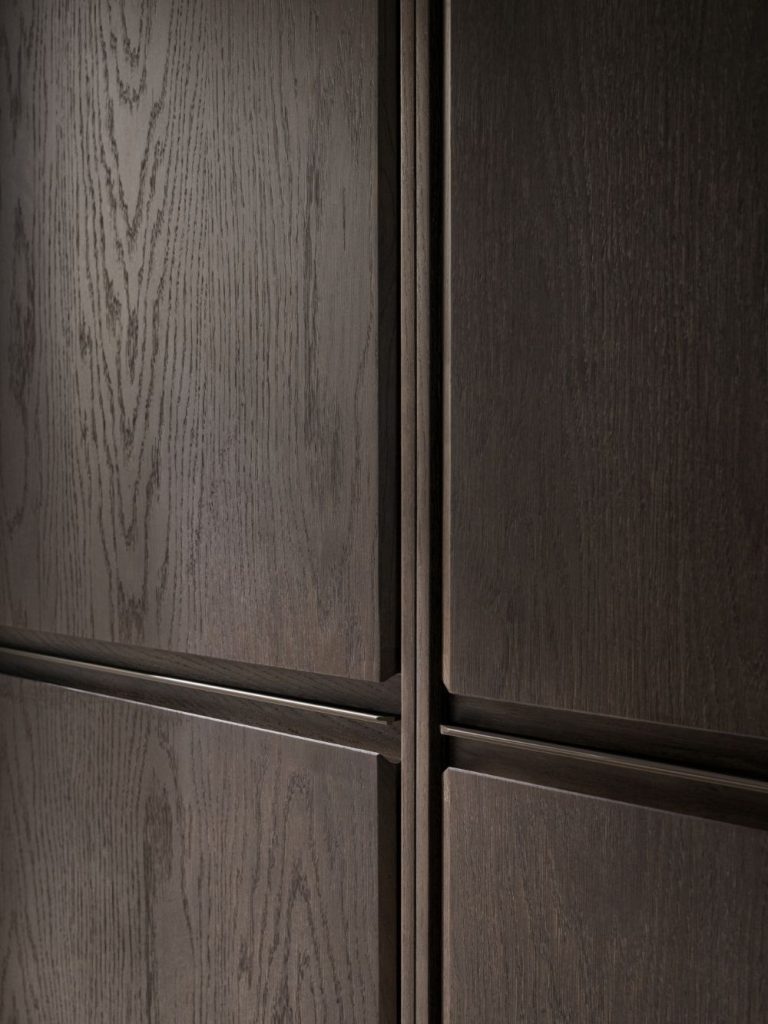Knowing where to invest your kitchen budget can be invaluable to both cost saving and maximising performance. Two of the most significant cost-affecting areas of a kitchen renovation are its layout and materials, but in most residential renovations, it’s the materials that tend to move the price tag more.

So How Does Layout Affect Cost?
Your kitchen’s layout defines the positioning of all your fixtures, furniture, and appliances. It dictates the ebb and flow of your kitchen, making sure that everything you need is placed smartly, efficiently, and conveniently. Typical kitchen layouts include: single wall, galley, L-shaped, U-shaped, peninsula, and island.
The more benchtop area used, the more expensive a kitchen is typically going to be; as it doesn’t simply demand more benchtop material, but also the unit’s cabinetry and hardware.
However, for most home renovations, layout changes alone don’t cause dramatic budget jumps. Many homeowners choose to retain their existing layout, which keeps costs manageable by avoiding plumbing or electrical rework. Even when redesigning the space, the expense of moving services or breaking walls can often be contained compared to what premium materials might cost.
What About Materials?
Here’s where the numbers can really start to climb. Choosing high end materials can make even single wall layouts fetch hefty price tags. The two major areas that can eat up your budget are the benchtop and cabinetry, but smart selection and efficient planning can cut down costs while looking akin to more premium offerings. Elsewhere, the floor, splashback, and accessories can also vary in material price.
Chiefly among renovators’ minds is the kitchen benchtop. Often seen as the centrepiece of one’s kitchen, it comes as no surprise that a hefty amount of the budget is dedicated to the bench. Laminate benchtops are the cheapest and provide excellent value for money. Engineered stone is a popular mid-range choices that may require maintenance. Porcelain and real stone, though undeniably stunning, can easily double or triple the material cost, especially in large kitchens.
Cabinetry also has the potential to quickly drive up costs. Here, materials typically come in the form of the core material and the finish. For the core, MDF strikes a good balance between durability, price, and finish variety. At the high-end, real wood is a pricey yet premium option. For the finish, melamine is affordable with a good range of aesthetics. A shift from white melamine to real wood veneer, for example, can dramatically elevate the look and the cost.

The splashback also has a diverse number of options, with tile being the cheapest yet perhaps the most versatile. Even within tile options, price can still vary drastically depending on material. Glass, stainless steel, and engineered stone are all valid mid-range choices. Porcelain makes another appearance as an expensive choice here. Elsewhere, the little things such as handle materials and cabinet systems can slowly add to the price.
The Verdict
While layout changes certainly impact cost, particularly if you’re knocking down walls or moving plumbing. In most residential kitchen renovations, it’s the materials that make the bigger difference.
A change from laminate to porcelain, or from melamine to real timber veneer, can easily outweigh the expense of reworking your layout. That said, the final cost always depends on your project’s scale, style, and priorities.
The best approach? Start with a clear vision of what matters most, functionality, finishes, or both, and plan your renovation around that balance.
👉 Get in touch with us today to book your first free consultation.

